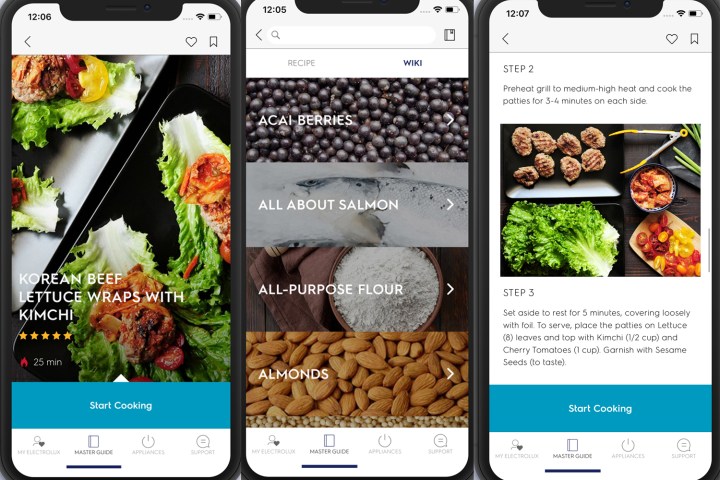
If you’re creating recipes for people cooking in the U.S., you’ll probably take for granted that your audience will have a fridge, stovetop, and oven. (Almost 99 percent of U.S. households do, according to the Census Bureau.) But in Thailand and Vietnam, not every kitchen has an oven.
“The kitchen is still very much cooking on the surface,” Jaimohan Thampi, head of digital transformation and Internet of Things at Electrolux Asia-Pacific, told Digital Trends. That means electric, gas, and induction cooktops. To cater to its diverse Asia-Pacific market, Electrolux partnered with SideChef, which makes a recipe app that includes voice commands, step-by-step videos, and integrated timers.
For the new Electrolux Life mobile app, SideChef brought all those features and helped incorporate some of the appliance maker’s recipes. “There are certain recipes that are really customized for Electrolux appliances, like for instance the steam oven,” said Thampi.
Before the launch of the app, all of Electrolux’s content for the region was only available on its website. The app will make user interaction more personalized. “I’m not giving you a recipe that you can’t cook because you don’t have an oven,” he said. The content will include both local and international dishes for cooks who want to learn new techniques.
In the future, Electrolux plans for the app to help Asia-Pacific users with meal planning and grocery delivery. To help reduce food waste, the company’s chefs could create recipes that incorporate last night’s leftovers, for example.
The U.S. arm of Electrolux recently partnered with Innit, which offers a similar connected kitchen experience. However, the manufacturer has been slower to embrace connected appliances than companies such as Whirlpool or LG. It does have a connected steam oven coming to some European markets, and it acquired smart sous vide maker Anova in 2017.
The SideChef-powered Electrolux Life app launched July 10 in Singapore, and the company will roll it out to Australia in August, the Philippines in September, and to Malaysia, Thailand, Indonesia, and Vietnam before November. It’s not just translating the recipes into various languages that will take some time but also keeping in mind the availability of different ingredients and cooking resources of each country, said Thampi. Right now, the SideChef partnership is just for the Asia-Pacific market, but he said it could expand to other regions as well.


